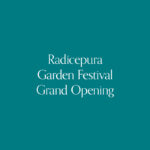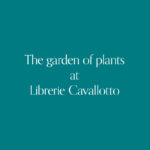As the stone to the house and the house to the city, as well as the twig to the tree and the tree to the forest, and so to the whole world.
The project consists of a simple and radical operation: delimiting a part of nature to make an interior elevating it in poetry from the rest of the natural world. Maintenance is entrusted to the bees, the wind, the rain, the sun; we strongly believe that the best possible sustainability is that which links protection of resources and ethical respect for all forms of biodiversity. A block of stone, a treasure chest within which natural life can reveal itself in all its vibrancy.
A black monolith rises on a dark hillock, its edge clearly dividing light from shadow. I approach and arrive at the edge of the hillock, it is black sand, I begin to climb the gentle slope while the sound of the sand beneath my feet accompanies the ascent. The faces of the monolith are smooth but not shiny, cut into sharp edges: the edge does not exist in nature, it is what distinguishes human action from natural action.
The monolith is not really a single block of stone, about halfway along the length of the faces I notice two gashes where the planes of light and shadow are reversed. Curiosity pulls me away from the corner: new sounds, the rustling of leaves, the hum of bees, new presences. I approach the gash, I am almost in contact with the bare rock, in front there is an unexpected world of colours that from the outside seemed impossible: a garden in a stone. So many colours, sounds and diversity.
In truth, the exuberance and richness of nature within the monolith is no different from any other anonymous part of the natural world. The colours, sounds and diversity appear as a revelation to man due to the contrast with the monochrome, silence and firmness of the stone.
The motionless geometry of the construction allows nature to be acknowledged by man.

Bohob is a group of architects born in Catania in 2019 from the need to combine research and professional activity, two fields that are today increasingly difficult to reconcile with the irremediable impoverishment of both.
The idea is to face the various aspects that make up the world of architecture by means of a cross- disciplinary design method that can be applied to the various areas we deal with, with the idea that tradition is the best possible ecological form.
A deep theoretical basis results in durable constructions: the solidity of theory and the weight of stone are one. The tool and verification of this approach is the triptych: a method for thinking at three scales simultaneously: the city, the building, the architectural construct. This allows a small intervention to build the city, because the detail and the whole are designed at the same time.
The underlying assumption is that the fragment builds the whole, it is the opportunity to rethink the city.





